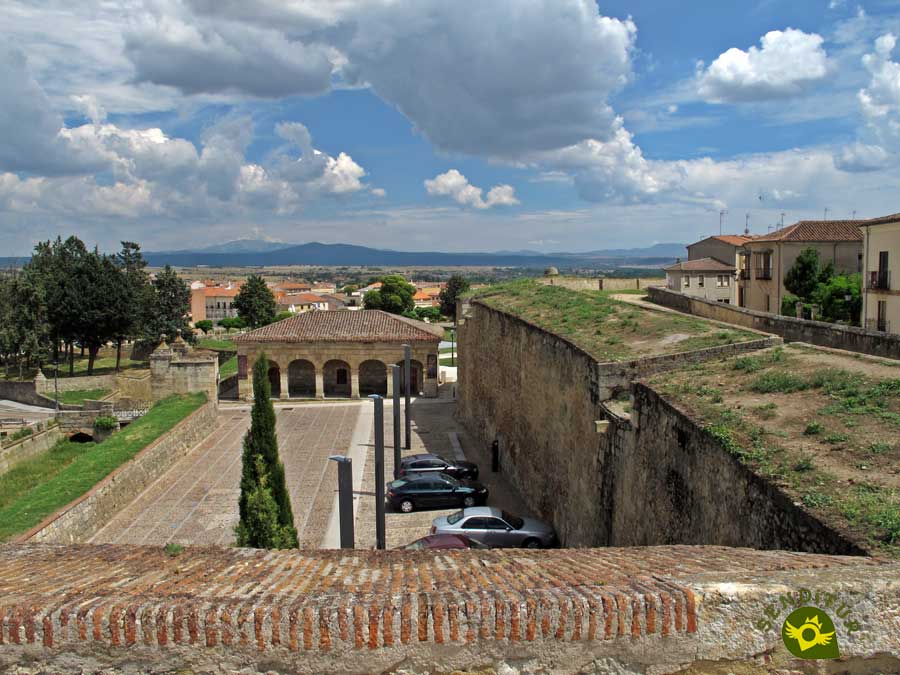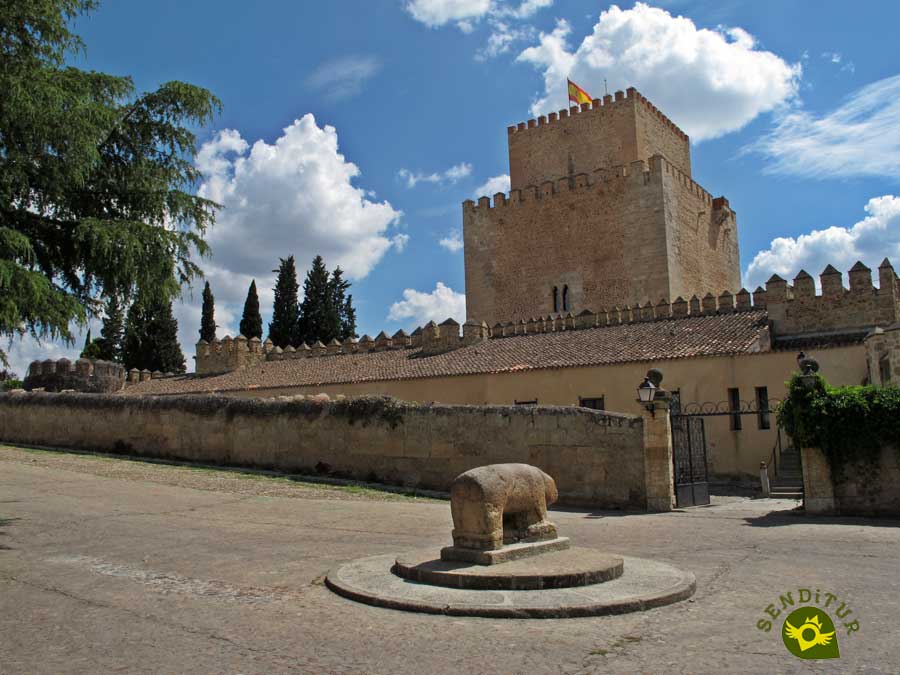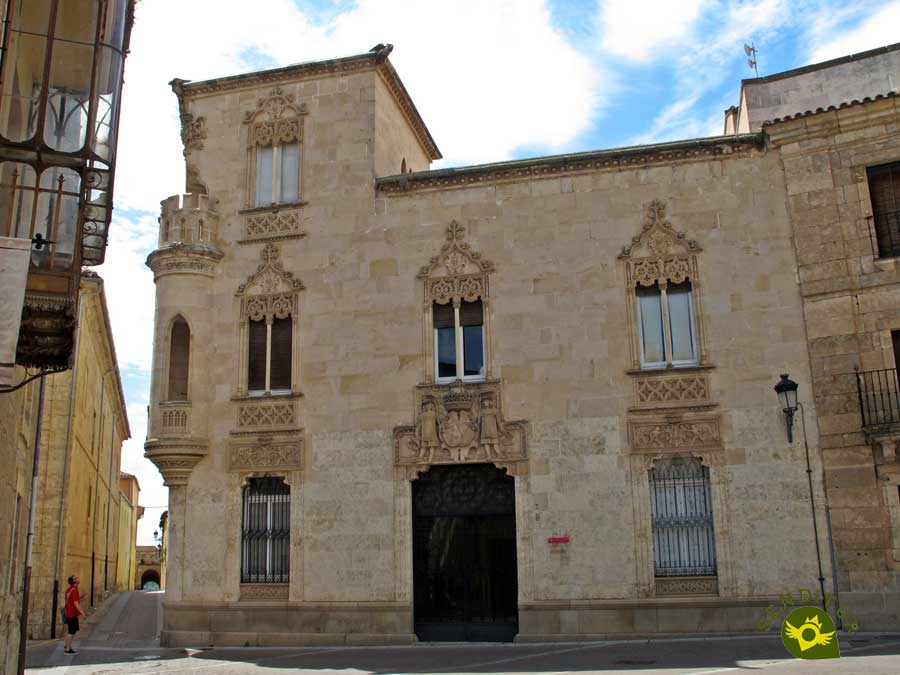It is located in the southwest of the province of Salamanca, on top of a hill on the banks of the Agueda River. The historical roots of Ciudad Rodrigo are lost in prehistoric times. Already closer, the Celts, specifically the Vetons populated the territory until it was Romanized back in the second century BC, from this glorious Roman period there are three columns that have become a symbol of the city and are represented on its shield. With the Visigoths and the Arab invasion the importance of Ciudad Rodrigo diminished. Alfonso VI tried to repopulate the area and for this he commissioned Count Rodrigo Gonzalez Giron, from whom it takes its current name, but it would not be until the end of the 12th century with King Fernando II that it was definitively repopulated, having also a political and ecclesiastical impulse, he gave it a charter, provided it with walls and raised it to the category of bishopric.

Ciudad Rodrigo lived its moments of greatest splendor during the 15th and 16th centuries, being the residence of the nobility; it is during this period that most of the religious monuments, palaces, temples and manor houses that are preserved today were built. But its frontier nature meant that the following centuries, and as a result of several wars, the city was ruined and deteriorated. The War of Independence places Ciudad Rodrigo again in the front line of battle. Its position as a fortified square between Portugal and Salamanca made the city suffer two sites, which produced significant material damage and deterioration in its historical and artistic heritage, which was also aggravated by the disentailment of Mendizábal. In 1833 and the creation of the current provinces, Ciudad Rodrigo was integrated into the province of Salamanca. At present Ciudad Rodrigo is a beautiful city, modern and dynamic that preserves with care and without forgetting a glorious past that treasures a rich heritage of monuments, which has earned that its walled enclosure was declared in 1944 Historic Artistic Monument.

Ciudad Rodrigo, historic and stately, Old City, Noble and Loyal, where beauty and art are present in its streets, squares and corners, lends itself to a slow and unhurried walk. A stone belt, the walls, surround a network of medieval influence; ordered to be built by Fernando II in the 12th century, of which some remains have been preserved as those we admire today are practically all from the 18th century reform. Originally it had eight gates, of which seven are still preserved and among them the Gate of the Sun, built during the reign of Enrique II of Trastámara and restored at the end of the 16th century, stands out; and the Gate of Santiago, at the southern entrance to the walled enclosure, is believed to be of medieval origin, without forgetting the Gate of the Count, the Gate of La Colada, the Gate of Amayuelas, which are actually two, the small or New Gate, is the oldest and largest that was opened in the mid-20th century and the Gate of Santa Cruz known as the Gate of San Vicente or Sancti-Spíritus.

At present these walls have been converted into a pleasant walk of more than two kilometres from which to contemplate the beautiful views of the splendid landscapes that surround Ciudad Rodrigo. Close to the wall, in the highest part of the city, is the castle, built by Enrique II of Trastámara in the 14th century, in which the Homage Tower stands out. The cathedral of Santa María, the most emblematic and famous monument of Ciudad Rodrigo, was built in the mid-12th century although it was finished in the 16th century. It perfectly combines Romanesque, Gothic and Plateresque styles, three doors give access to the interior of the temple and any of them will not go unnoticed by the visitor, the Portico del Perdón, very possibly from the mid-13th century, the door of Enlosado or Amayuelas and the door of Las Cadenas.

Manor houses, palaces, churches... The palace of the Count of Alba de Yeltes, the palace of the Marquise of Carthage, the 16th century the House of La Cadena, the former convent of the Barefoot Franciscans, the church of San Pedro and San Isidoro, whose origins date back to the 12th century, and the Romanesque church of San Andrés are the oldest in the city; the Hospital de la Pasión, from the 16th century; the palace of the Águila or the Ávila and Tiedra family, also known as the Montarco family; the town hall, from the 16th century and in the Renaissance style, are part of a long list of emblematic buildings that populate the streets of Ciudad Rodrigo. Such a long and entertaining tour deserves a stop and rest to savour the rich gastronomy whose unmistakable protagonist is the pork and if we want to taste the typical dish par excellence of the Mirobrigian kitchens we have to ask for the eggs with farinato, which besides giving a whim to our sense of taste we do a small homage to the inhabitants of these lands, farinatos.

Ciudad Rodrigo celebrates its patron saint, San Sebastián, on 20 January, but the most important festival held in the city during the five days prior to Ash Wednesday is the Carnival of the Bull, declared to be of National Tourist Interest; the Carnival is inaugurated with the traditional Campanazo, a peculiar Chupinazo in which the town of Mirobriguez turns the Campana Gorda.
Ciudad Rodrigo becomes a medieval market in August with the celebration of the Martes Mayor, which commemorates the market that has been held every Tuesday of the year in Ciudad Rodrigo since 1475 when the Catholic Kings granted the city the privilege of holding a free market every Tuesday to revitalize trade in the area and as compensation for the continuous sieges that their border situation caused.
The bucolic landscape of Ciudad Rodrigo is dominated by its extensive pastures and the presence of a tree that grows in these lands by spontaneous generation, the holm oak.

If something stands out in the craftsmanship of Ciudad Rodrigo is the filigree charra, gold and silver work made according to popular tradition, to which they give shapes and styles typical of the place. The piece par excellence is the silver charro button for the popular costumes.
MORE ROUTES AVAILABLE, DON'T MISS IT...
MORE PLACES AVAILABLE, DON'T MISS IT...
Ciudad Rodrigo can be reached from Lumbrales by following the SA-324, while the A-62 connects it with Salamanca and Portugal. Other roads also lead to Ciudad Rodrigo, connecting it with towns such as La Alberca, Béjar and El Bodón, among others.
The bus station of Ciudad Rodrigo, which is served by regular lines that connect it with Salamanca and other provincial capitals, is located in the street Campo de Toledo and the telephone number for further information is 923 462 696.
Ciudad Rodrigo has a long-distance rail service linking Lisbon and Madrid.
SENDITUR is not responsible for any variation in the information described, as well as for the misuse of its guides and recommends that everyone be responsible and prudent in carrying out the activity. Likewise, we invite you to document yourself with books and specialized guides to complement the information described. From the commitment of SENDITUR with Nature and the respect to the balance of the environment, SENDITUR urges you to travel in a responsible way, with low environmental impact and respecting at all times the Natural, Cultural and Social environment wherever you go. For any suggestion, SENDITUR invites you to send an email to .
Continue watching …